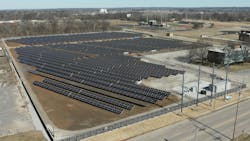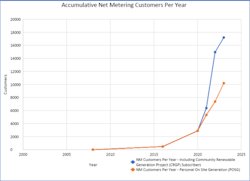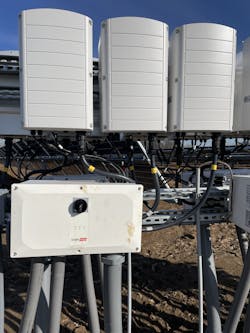Consider A Customer DER Interconnection Process
Over the last several years, the state of Illinois has experienced exponential growth in the number of customer-owned distributed energy resource interconnections of all sizes, from residential rooftop solar to large-scale solar farms. This growth can be attributed, in part, to a series of legislative actions that stretch back as far as 1997, when customer choice was introduced. However, it is more recent policy changes that have sparked the uptick in distributed energy resource (DER) penetration in the state.
One such change was legislation in 2007 creating the Illinois Power Agency to develop and conduct procurement processes for resources, including energy, renewables and energy efficiency. In 2016, the Future Energy Jobs Act (FEJA) initiated renewable energy credits (RECs) to incentivize the deployment of customer-owned DER. The act also introduced the Solar for All program, which began the state’s community solar program. Another result of the FEJA legislation, Illinois’ smart inverter rebate provides additional financial incentives to DER owners.
Then, in 2021, Illinois passed landmark climate legislation aimed at transitioning the state to 100% renewable energy by 2050. The Climate and Equitable Jobs Act (CEJA) mandated significantly increased financial incentives for all sizes of DER and established carbon-free emissions goals for the state. The CEJA legislation has catalyzed DER growth and spurred Ameren Illinois, the state’s second largest electric utility, to look at ways to continuously improve how it efficiently manages the volume of interconnections while ensuring the stability and reliability of the electric grid.
As a result of these policy changes, Ameren Illinois has seen an increase in net metering customers and community solar subscribers over the last 15 years. While community solar subscribers do not individually account for interconnection applications, these customers do correspond to the large distribution connected solar applications Ameren Illinois receives. In addition to a large increase in the number of interconnections, the utility has experienced a substantial increase in connected renewable capacity. Connected renewable generation on the distribution system has increased from approximately 4 MW in February 2016 to around 450 MW as of Dec. 1, 2023.
Interconnection Applications
With the surge in interconnection applications, Ameren Illinois moved to establish a more formalized DER interconnection process. The utility’s interconnection requirements are designed to facilitate customer-sited DER installations while simultaneously ensuring the delivery of safe and reliable power to all customers. Many of the requirements for customer DER interconnections are defined in the Illinois Administrative Code Title 83 (Admin Code). The Admin Code creates a categorization of projects based on the size of the generation being installed and the amount of power the proposed generation will be able to export to the grid. These categories determine how Ameren Illinois processes applications and its timeline for completing administrative reviews.
Technical Considerations
When developing its interconnection process, Ameren Illinois factored in numerous technical considerations. The interconnection screening process is primarily driven by the application level and screening criteria defined by the Admin Code. Level 1 projects are reviewed using a set of screening questions primarily designed to verify the distribution service facilities (service transformer and secondary wire) are sufficient to allow interconnection. There is a screen to identify reverse power flow at the substation, but even if system modifications are identified for a given Level 1 project, interconnection costs are capped at US$200, so these projects often move forward with construction regardless of the outcome of the interconnection screening.
Level 2 projects follow a two-stage review process, as applicable:
- The first stage is an expedited review, using statutory-prescribed screening questions in a context similar to that of Level 1. The primary difference between the two reviews is the outcome of failed screening questions. While Level 1 projects have capped interconnection costs of $200, Level 2 projects are required to pay for all required system modifications to allow the project to connect to the grid safely and reliably. If all screening questions pass, then the project moves forward with an interconnection agreement, without having to proceed to a second stage of review.
- If a screening question is failed, then the project moves to the second stage, a supplemental review. This review is more in depth, using a system model to identify any adverse impacts the generation could potentially cause to the distribution system. This process also includes a review by the high-voltage distribution planning department to verify no issues will arise on the 34-kV or 69-kV systems,
as well as a review by the system protection engineer to verify existing protection systems are adequate.
While many different types of work are needed to facilitate the interconnection of DER to the distribution system, the criteria that require system modifications generally fall into one of four categories:
- Thermal capacity violations occur when DER creates reverse power flow that exceeds the maximum thermal rating of the conductor or devices that make up the circuit the DER is connected to.
- Steady-state overvoltage may occur due to the DER raising the voltage to enable reverse power flow.
- Rapid voltage change (RVC) is a phenomenon that occurs due to the intermittent nature of renewable generation. For solar generation, cloud coverage changes that occur throughout the day will result in output fluctuations that impact the voltage of the line.
- Reverse power flow is possible any time parallel generation is connected to the distribution system and may render existing system protection schemes inadequate.
Witness Testing
All DER interconnections to the Ameren Illinois distribution and sub-transmission systems are subject to a witness or commissioning testing process. The primary goal of this testing is to validate the DER can operate in a safe manner when generating in parallel with the grid. This testing keys off performance requirements found in the IEEE 1547 standard and includes tests of the DER shutdown and start-up behavior during grid loss and restoration events.
The wide variety of DER installations results in unique challenges for each general class of interconnection. The volume of residential interconnections has grown significantly since the passing of the 2021 CEJA legislation, resulting in a significant staffing and digital resource investment to meet the increased demand for witness testing these sites. In addition to this, many DER vendors are now offering residential systems that incorporate battery energy storage systems (BESS), with the ability to form a microgrid inside the residence during a grid outage. These systems are often complicated and require more time and resources to complete the associated witness testing.
Remotely located generation (RLG) sites (community solar) are typically straightforward with respect to the witness test procedure. The primary challenges with these sites relate to their ability to detect and shut down for single-phase grid-loss events. While the inverters used are certified to the requirements of IEEE 1547, experience has shown, in some cases, the fully assembled DER system can introduce components that diminish the ability of the inverters to accurately detect grid-loss events.
Most developers of these larger RLG sites have adopted the strategy of installing a relay-controlled recloser on the DER side of the revenue meter. The relay on this device is programmed to sense and trip all three phases of the recloser for single- and three-phase grid-loss events. This has proven to be a solid solution to meet witness testing requirements, and it also protects the site from extended exposure to loss of single-phase events.
Lessons Learned
From small to large interconnection projects, Ameren Illinois has accumulated valuable experience through its DER enablement, including the understanding that even interconnections that appear straightforward can become a challenge. Ameren Illinois is committed to further enabling DER adoption through enhanced processes and technological advances that provide maximum value to all stakeholders, while ensuring safe, reliable and resilient operation of the electrical grid for all customers.
Brad Barnes is a consulting engineer with Ameren Illinois. He started his career with Ameren Illinois in 2018, leading smart grid technology research efforts at the Ameren Illinois Technology Applications Center in Champaign, Illinois. Barnes transitioned to the Ameren Illinois DER integration team in 2021 and now works to continuously improve the DER interconnection process by working collaboratively with customers and various teams within the utility. Barnes received his BSEE degree from Rose-Hulman Institute of Technology in 1988.
Eddie Creighton is an electrical engineer on Ameren Illinois’ clean energy transition team. He works with engineers to facilitate DER interconnections on a daily basis. Much of this includes leading the efforts to update interconnection standards, policies and procedures. Prior to this role, Creighton served almost five years as a distribution planning and operations engineer. Among other duties, he performed dozens of interconnection studies to facilitate the Illinois Renewable Energy Credit lottery, studied the impacts of parallel generation on load forecasts, and worked with customers and developers to commission several customer-owned solar fields. Creighton received a BSEE degree from Clemson University in 2015.
About the Author
Brad Barnes
Brad Barnes is a consulting engineer with Ameren Illinois. He started his career with Ameren Illinois in 2018, leading smart grid technology research efforts at the Ameren Illinois Technology Applications Center in Champaign, Illinois. Barnes transitioned to the Ameren Illinois DER integration team in 2021 and now works to continuously improve the DER interconnection process by working collaboratively with customers and various teams within the utility. Barnes received his BSEE degree from Rose-Hulman Institute of Technology in 1988.
Eddie Creighton
Eddie Creighton is an electrical engineer on Ameren Illinois' clean energy transition team. He works with engineers to facilitate DER interconnections on a daily basis. Much of this includes leading the efforts to update interconnection standards, policies and procedures. Prior to this role, Creighton served almost five years as a distribution planning and operations engineer. Among other duties, he performed dozens of interconnection studies to facilitate the Illinois Renewable Energy Credit lottery, studied the impacts of parallel generation on load forecasts, and worked with customers and developers to commission several customer-owned solar fields. Creighton received a BSEE degree from Clemson University in 2015.



